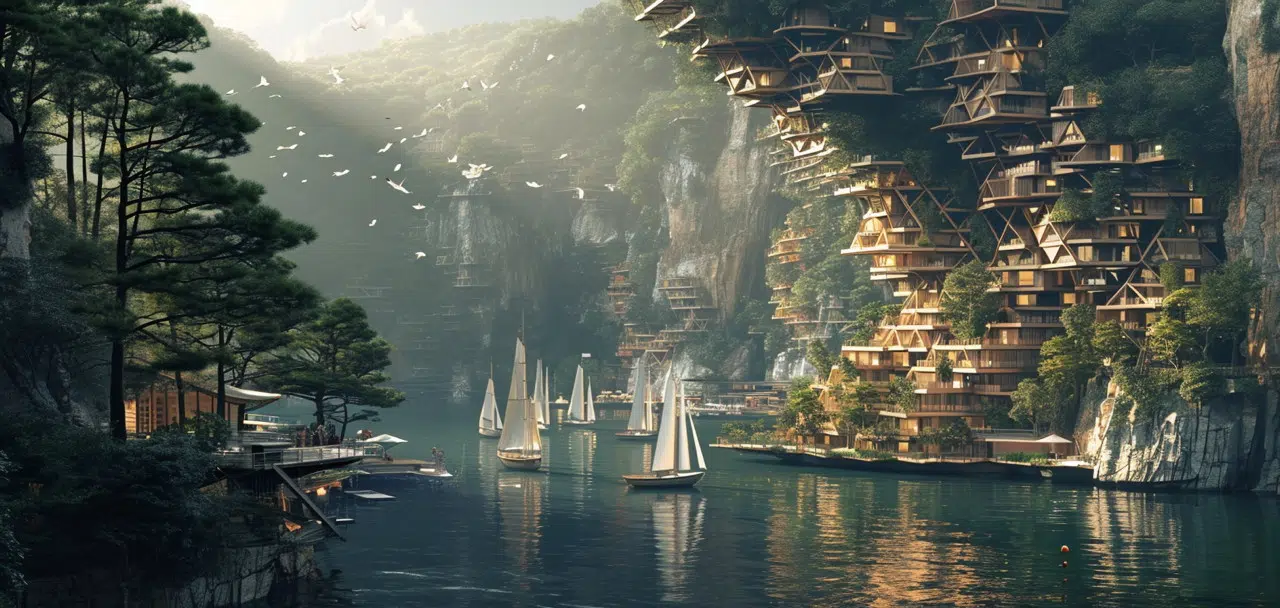
Future Visualisations for Preferable Futures, using the MidJourney’s Generative Adversarial Networks.
I am in my third week of long Covid again. I can spend one or two hours per day on AI images and doing some writing. These images are part of what kept me motivated while mostly stuck in bed.
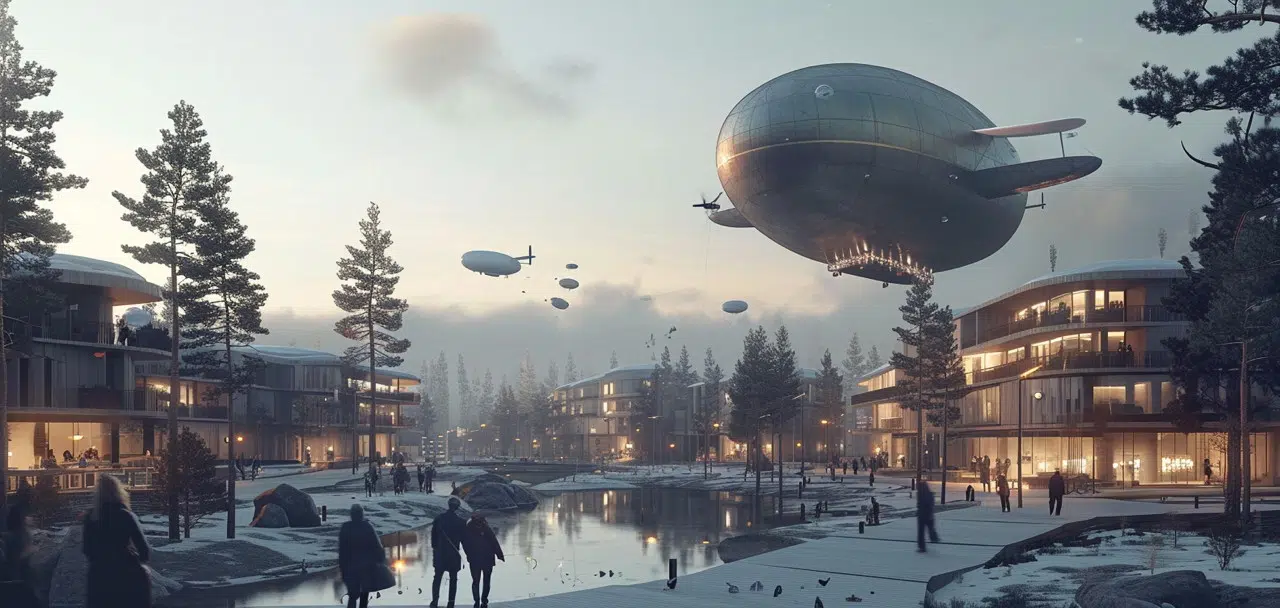
In this ongoing series, I continue to use the power of AI to explore a compelling question: What does a future look like where we successfully slow down and avert the looming abominations of collapse and extinction?
As a side note here, working with blimps as transportation is extremely challenging. I might need to imagine more creative ways to get them to do what I want. There are a few more in the full gallery.
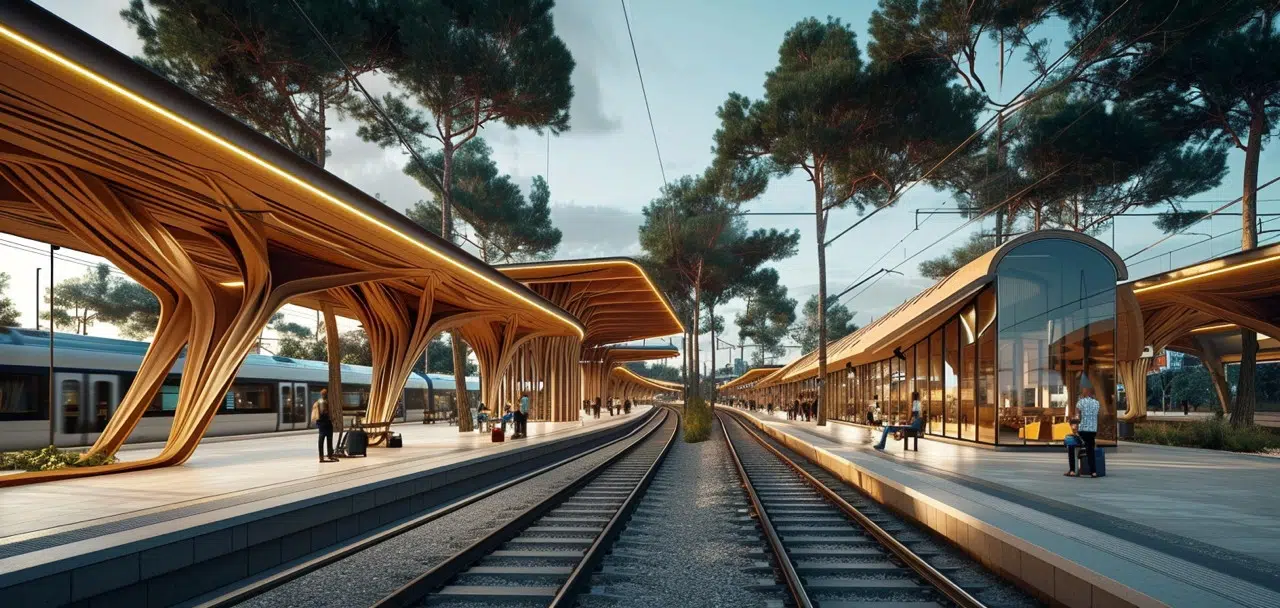
“A developed country is not a place where the poor have cars. It’s where the rich use public transportation.” — Enrique Peñalosa
This quote encapsulates the starting point of my reflections. It highlights how our visions of future cities are often hijacked by the elite minority, with their skyscrapers and flying cars dominating the narrative for decades.
I have been struggling with car-free cities. Thanks to Version Six, I found a way around this issue. I stopped using actual references of cities and instead focused more on the landscapes and vegetation archetypes to build the ecosystems as interacting with the architectural topics.
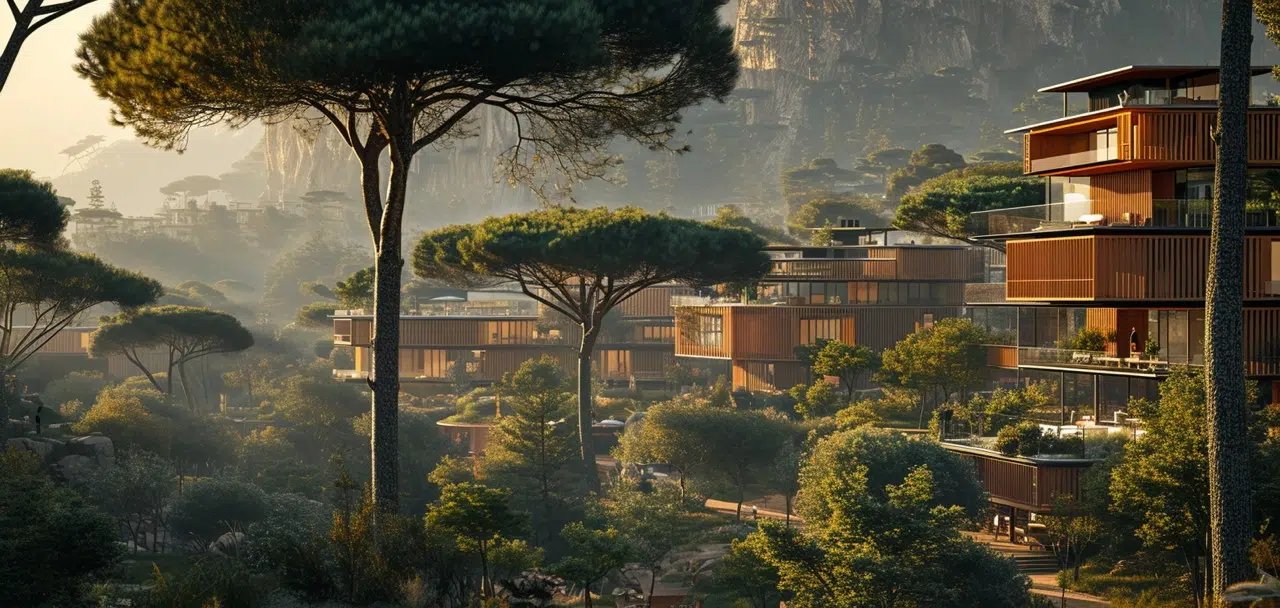
The future is still unavailable on Unsplash; we must actively imagine it. In a world where 2023 marked the hottest year on record, it’s imperative to contemplate what this means for our collective ability to inhabit the Earth sustainably.
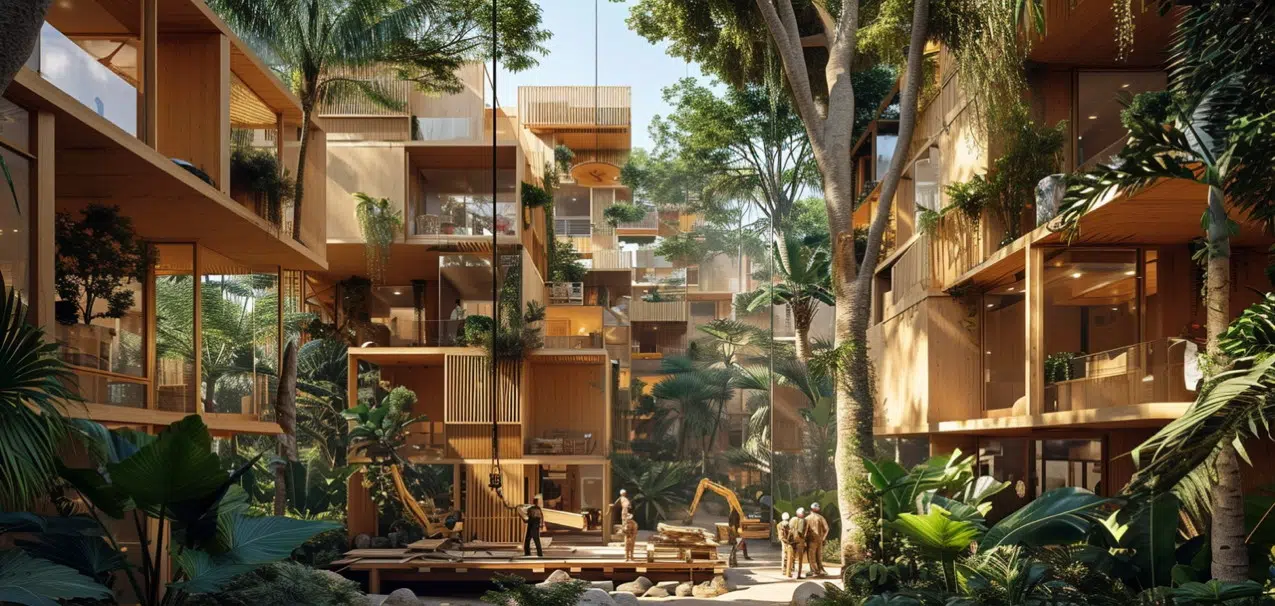
When my children, aged 8 and 12, express concerns about climate change, extinction, wars, and environmental pollution, I feel drawn to using AI’s image-generating capabilities to produce positive and inspiring visuals. I aim to visualize a positive future for them, one that is both plausible and preferable, grounded in what we know and can achieve, with a touch of Sci-Fi.
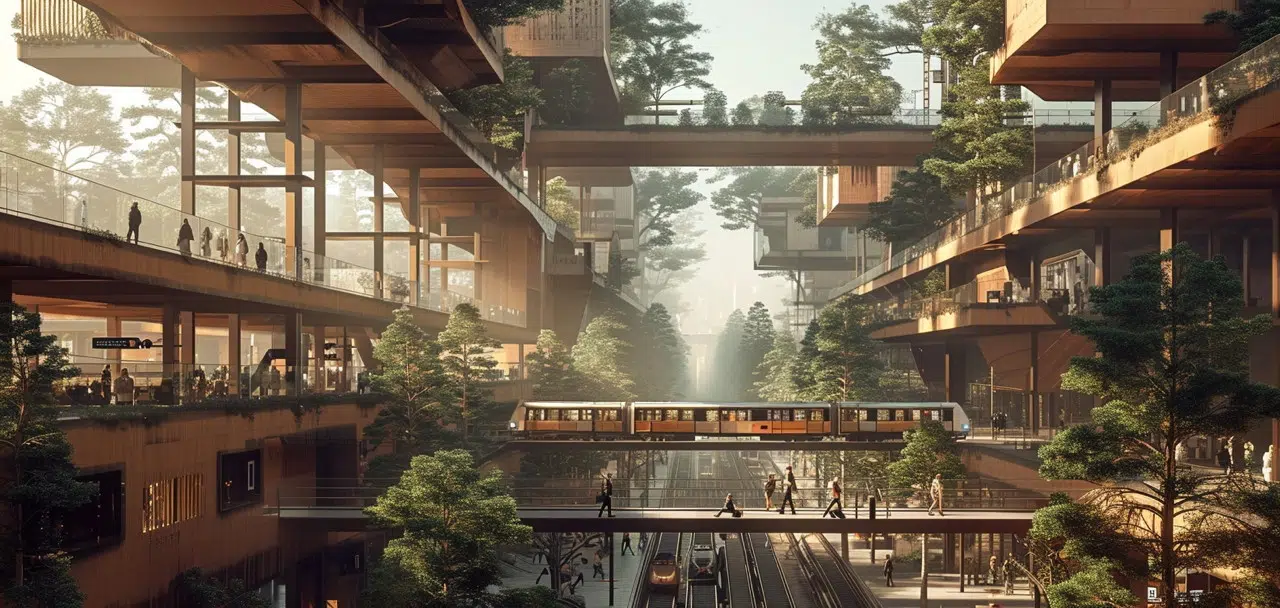
Here again, only rail. For my son who plays Minecraft, these futures seem to work really well with him.
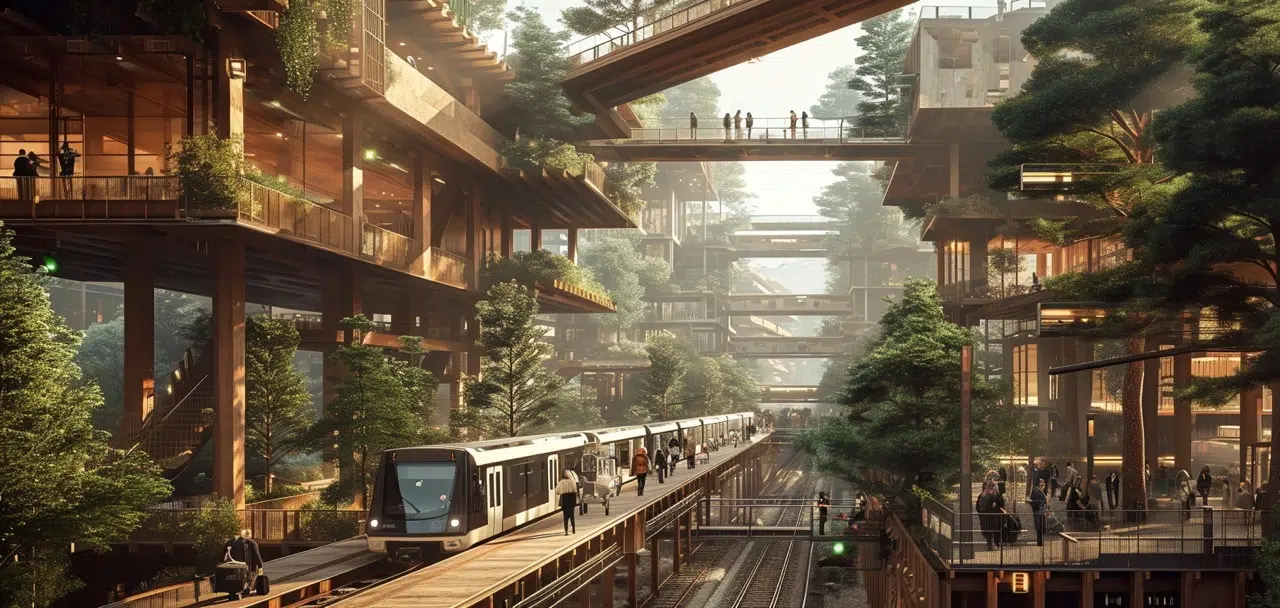
In the continuity of the Urban Forest series, I like the tension between the trees, the frames and the trains.
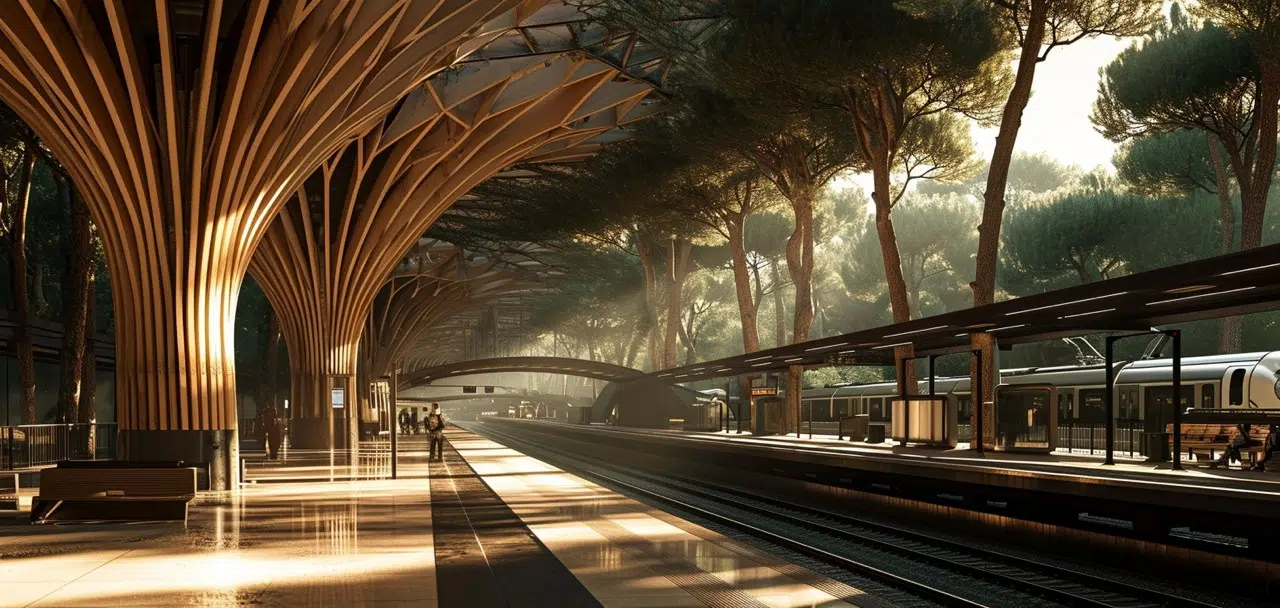
I know a few train geeks who will appreciate these.
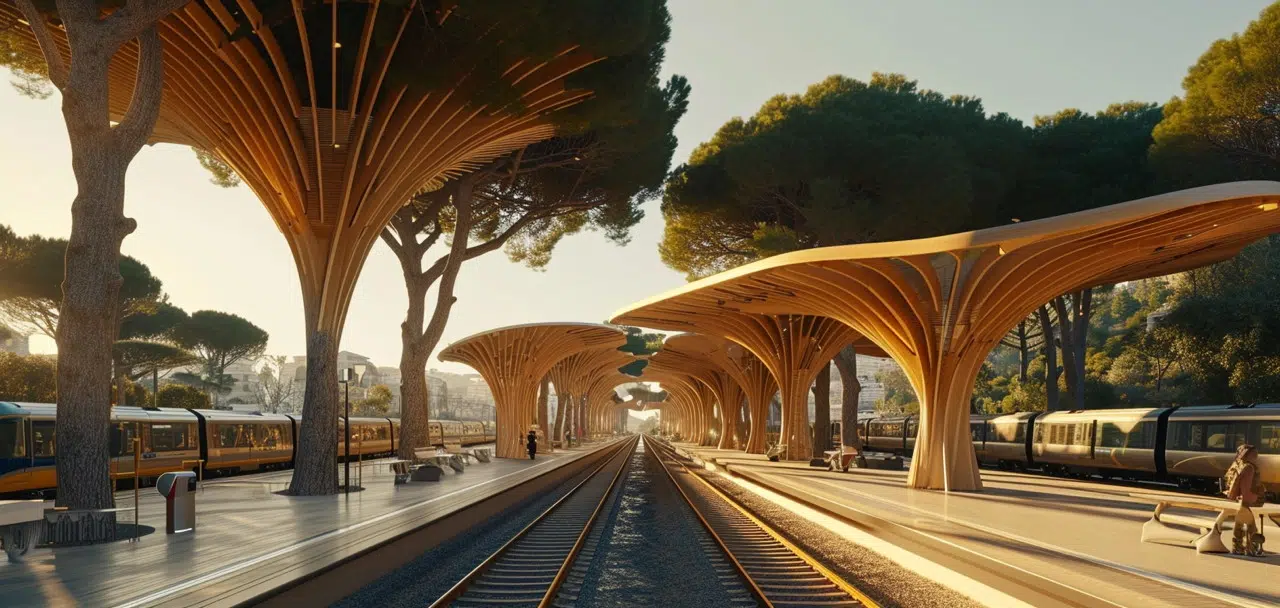
With this exploration, I’m also re-evaluating my understanding of landscape futures. During the summer of 2022, the scenery reminded me of the south of Italy or Spain as I drove through the Jura Vaudois countryside. Using AI, I embrace this feeling and attempt to immerse myself in a future scenario where the South’s warmth extends northward.
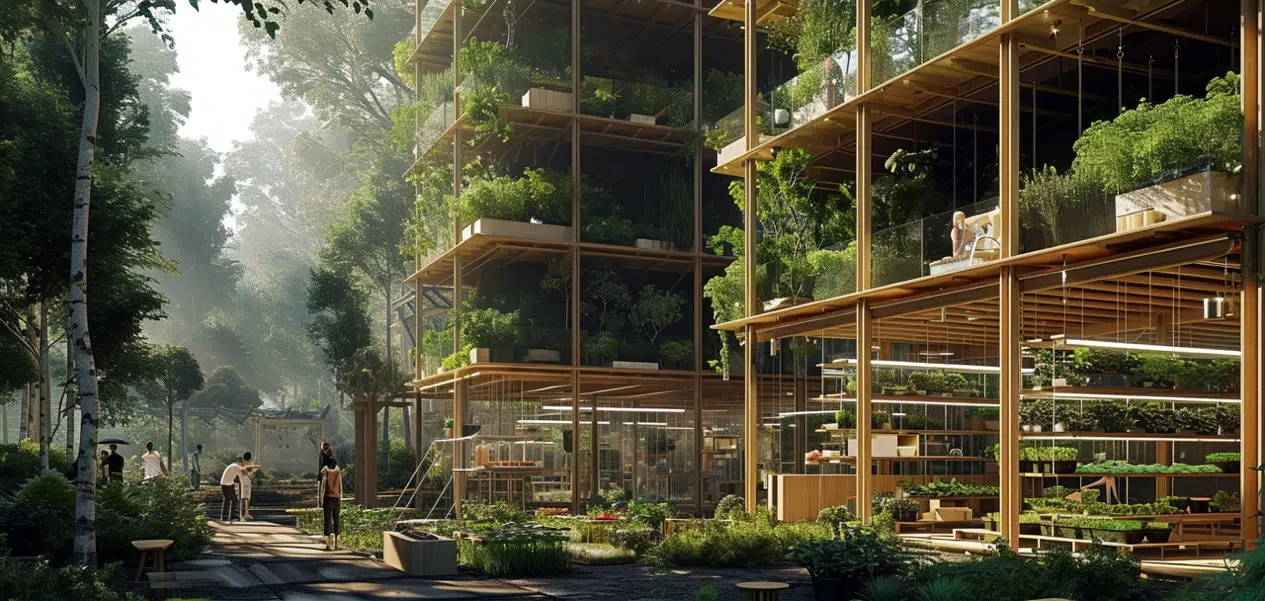
My focus includes vegetation, wood-based structures, communal spaces, and public transportation infrastructure. After exploring algae farms, I started exploring other sustainable food systems, emphasizing urban farming. This culture values the beauty of organic life, especially tall pine trees, and a climatarian diet.
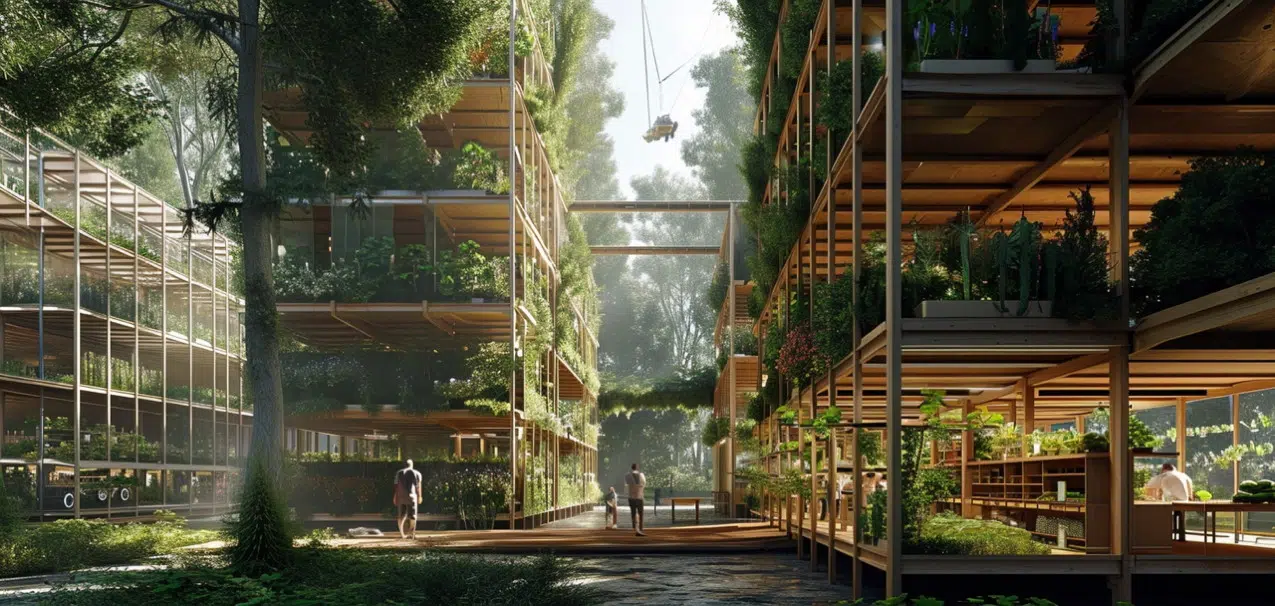
The technical aspects, like figuring out the structural integrity of these imagined spaces, are secondary to capturing the mood and essence of a slower, more thoughtful way of life—akin to solarpunk.
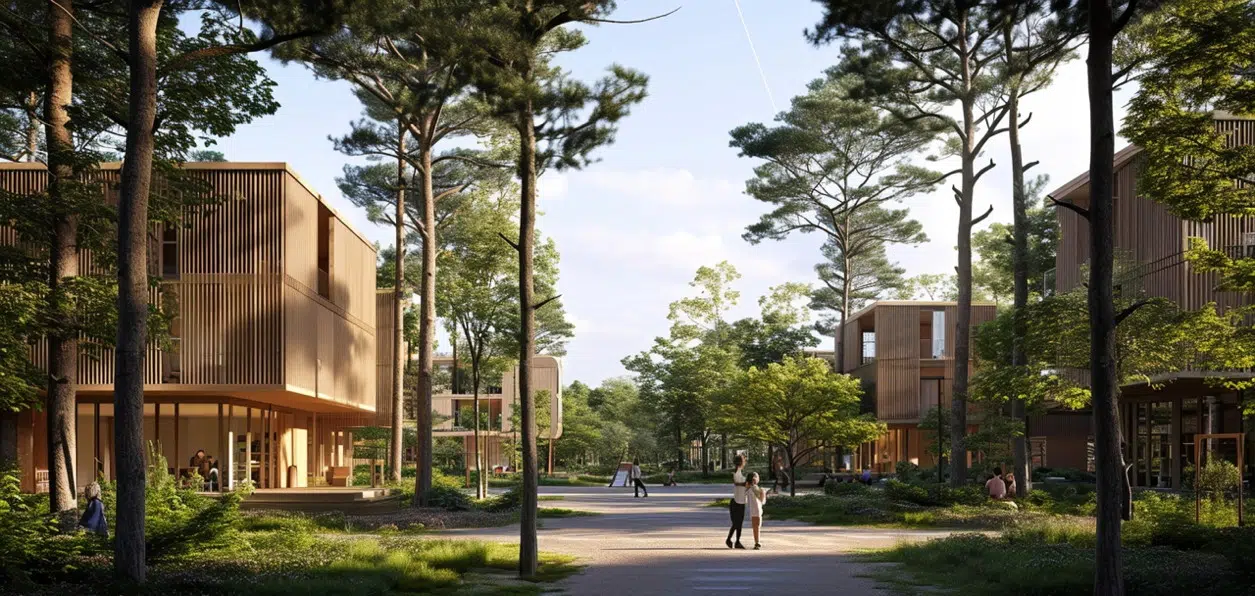
I tried to reimagine a village, a neighbourhood, without the cars, the parking space, and the roads. The main challenge here is avoiding the holiday hotel resort clusters, often designed for electric golf carts rather than walking.
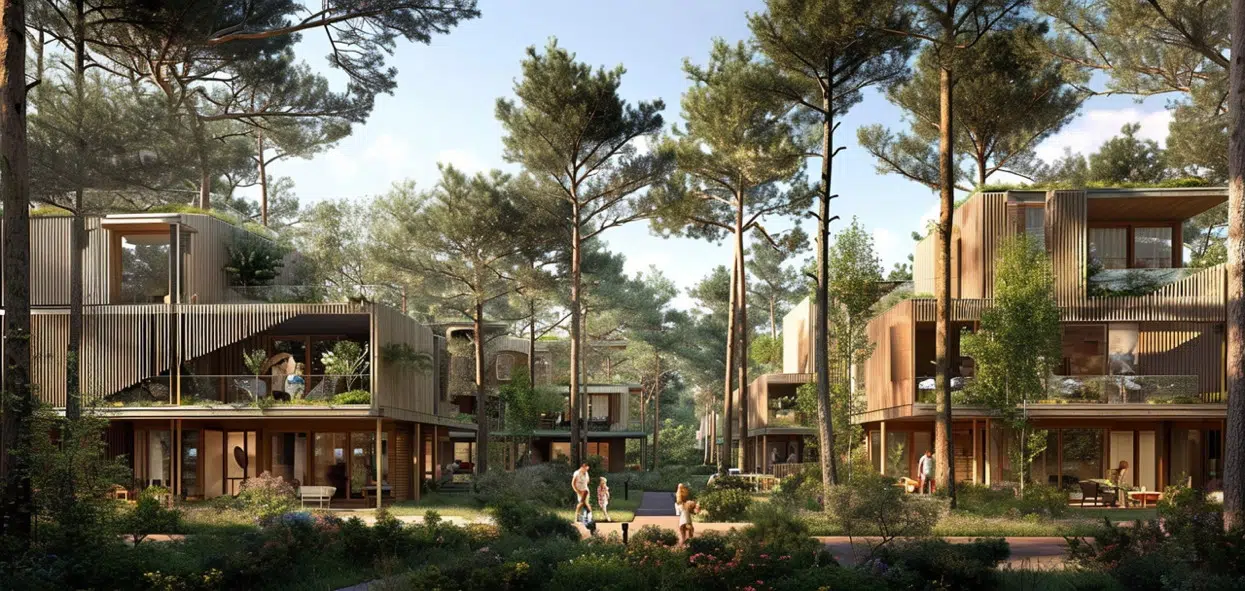
I also wanted to avoid making it about retail spaces and shopping. I imagined some floating vegetable and flower markets. Still, I avoided going deeper into the retail rabbit hole for this exercise.
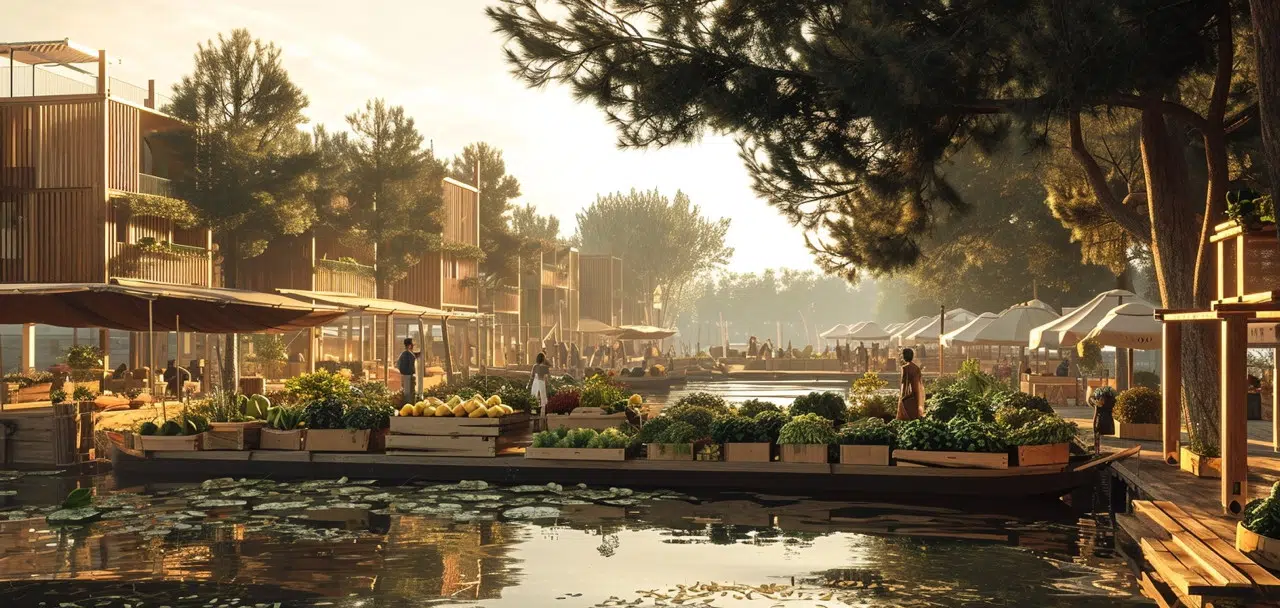
I didn’t go further than this regarding what would be commercial today. However, a common-based economy would approach farming, vegetable and fruit production differently than our current competition-based model.
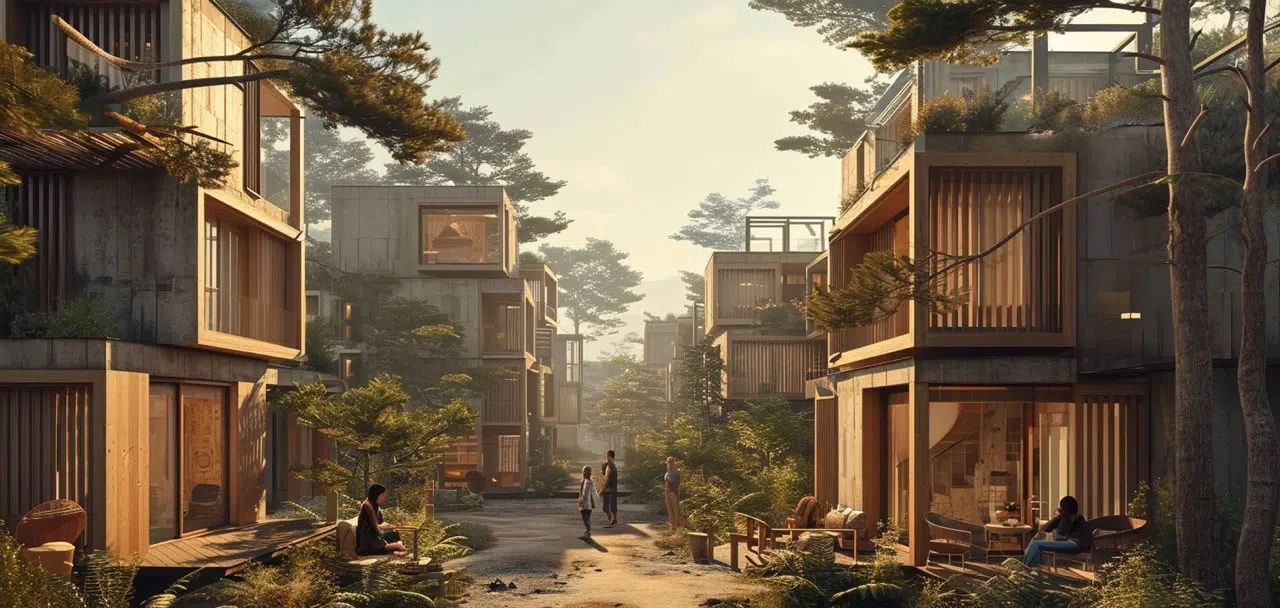
In thee heat, the absence of paths, in stones or gravel, can also rapidly feel like a trailer park, and the tension between sober rewilding and poverty is not easy to navigate with the image generator references.
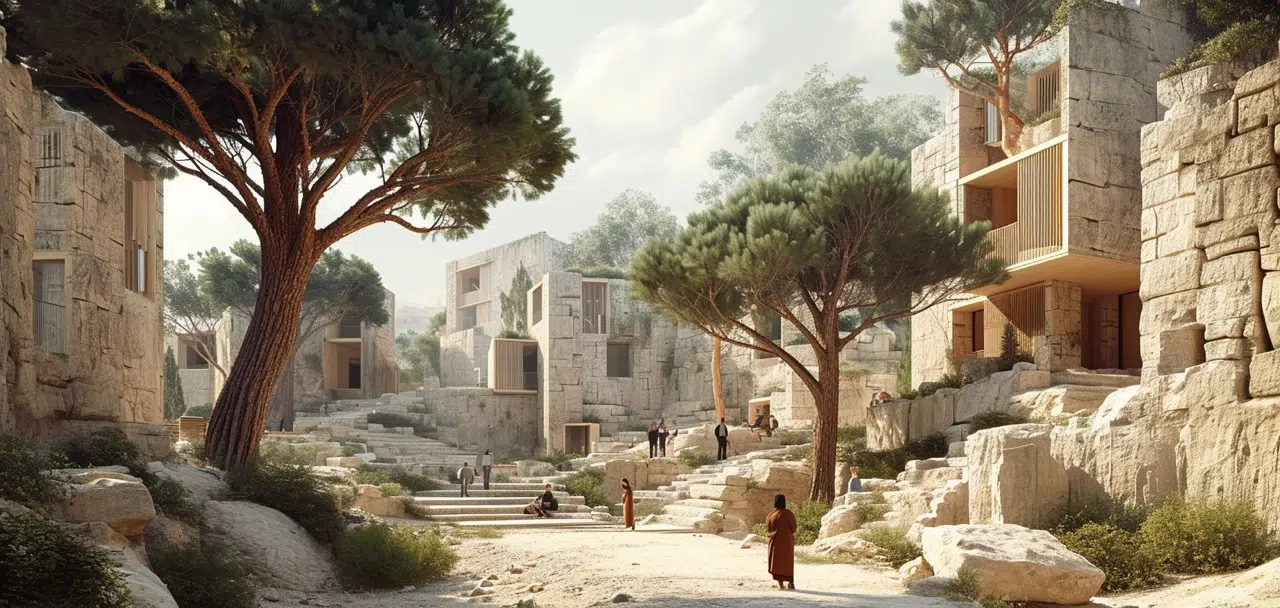
As the Mediterranean also extends East, I was happy to try to prompting some of the feelings, light and atmosphere I experienced when doing field research in Jordan. Here, the opportunity is to play more with geosourced materials and bioclimatic architecture.
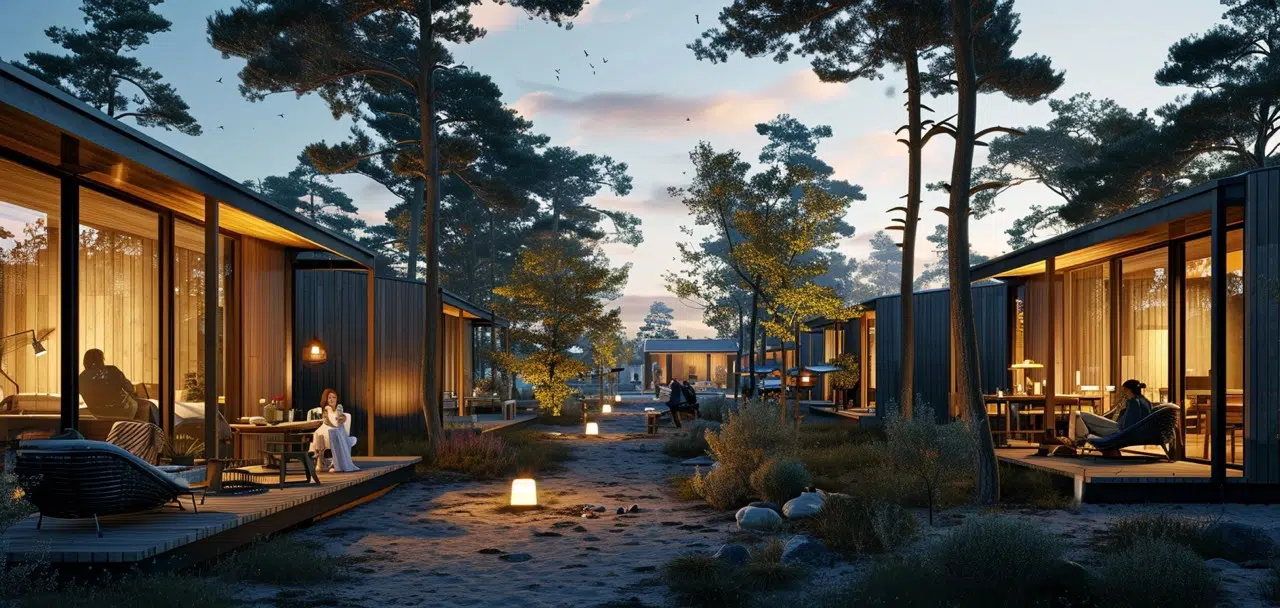
How would this life feel? What if we embraced a four-day workweek? Could we evolve into a slow, semi-nomadic society that appreciates minimal living? Sort of my favourite pathway. My daughter, concerned about the non-car-centric dimension of the project, immediately asked about ambulances and firemen. I must dig more into that direction. I am getting the “mood” part right. I can now think about more functional stuff. Probably involving something like Barcelona’s superblocks.
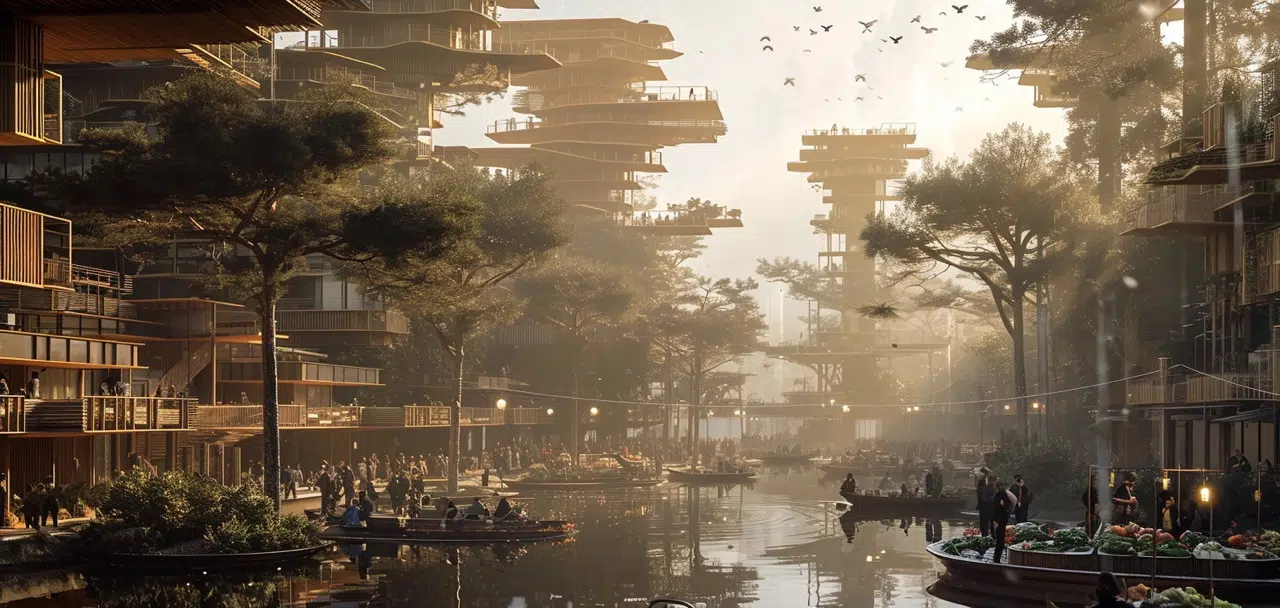
What new cultural paradigms will emerge from this civilization? Ultimately, it’s our children who will shape and define these answers.
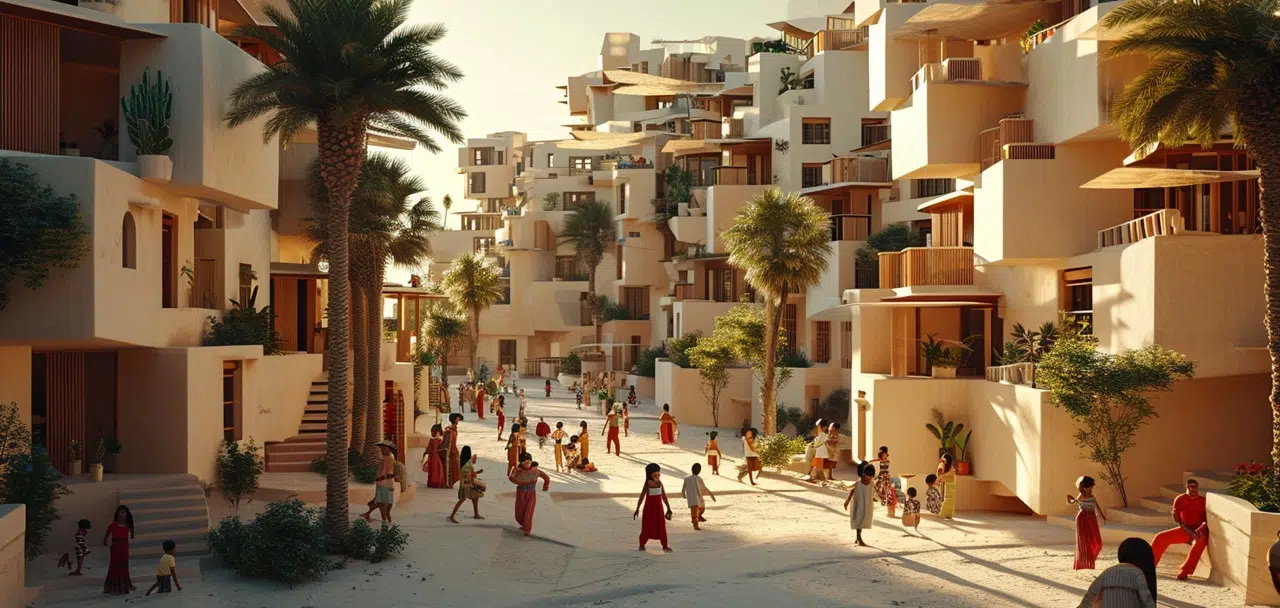
I also wanted to explore other Mediterranean urban atmospheres and habitats inspired by North Africa. I once imagined a future scenario called Everything South. I think I was inspired by some aspects of that scenario here.
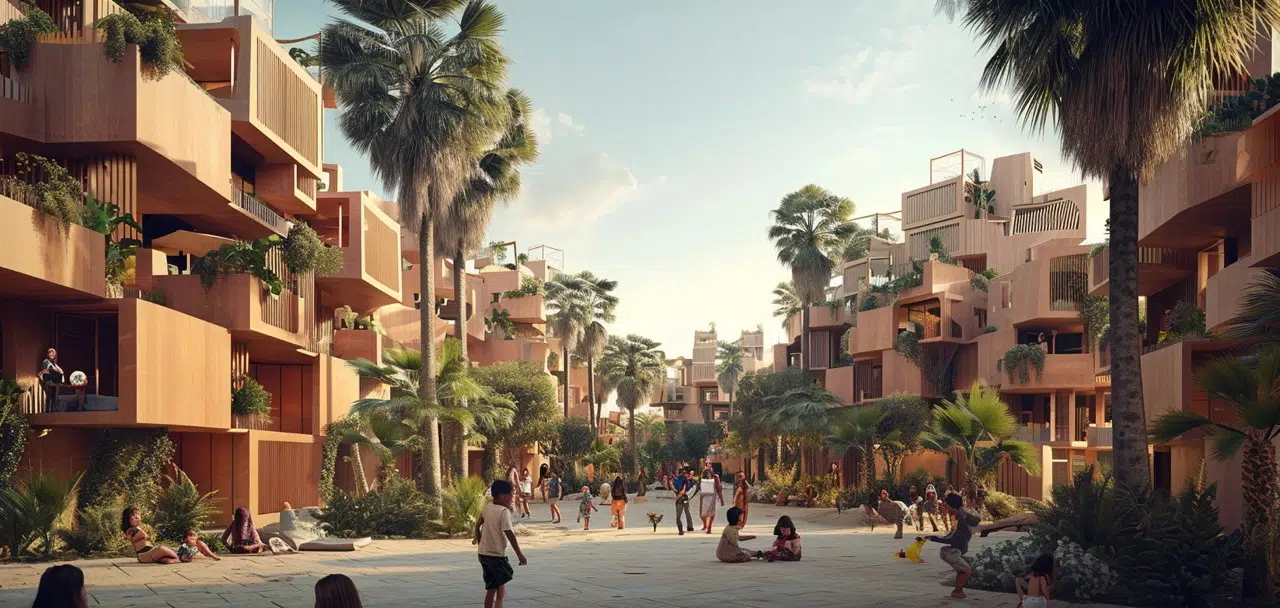
I am pretty surprised with the exercise of removing the car and its infrastructure from the living and sharing paradigm. Visually, it opens a new horizon for imagining a different way of living, not centred around the legality of the assembly line, the commute, and the broken car-centric city model.
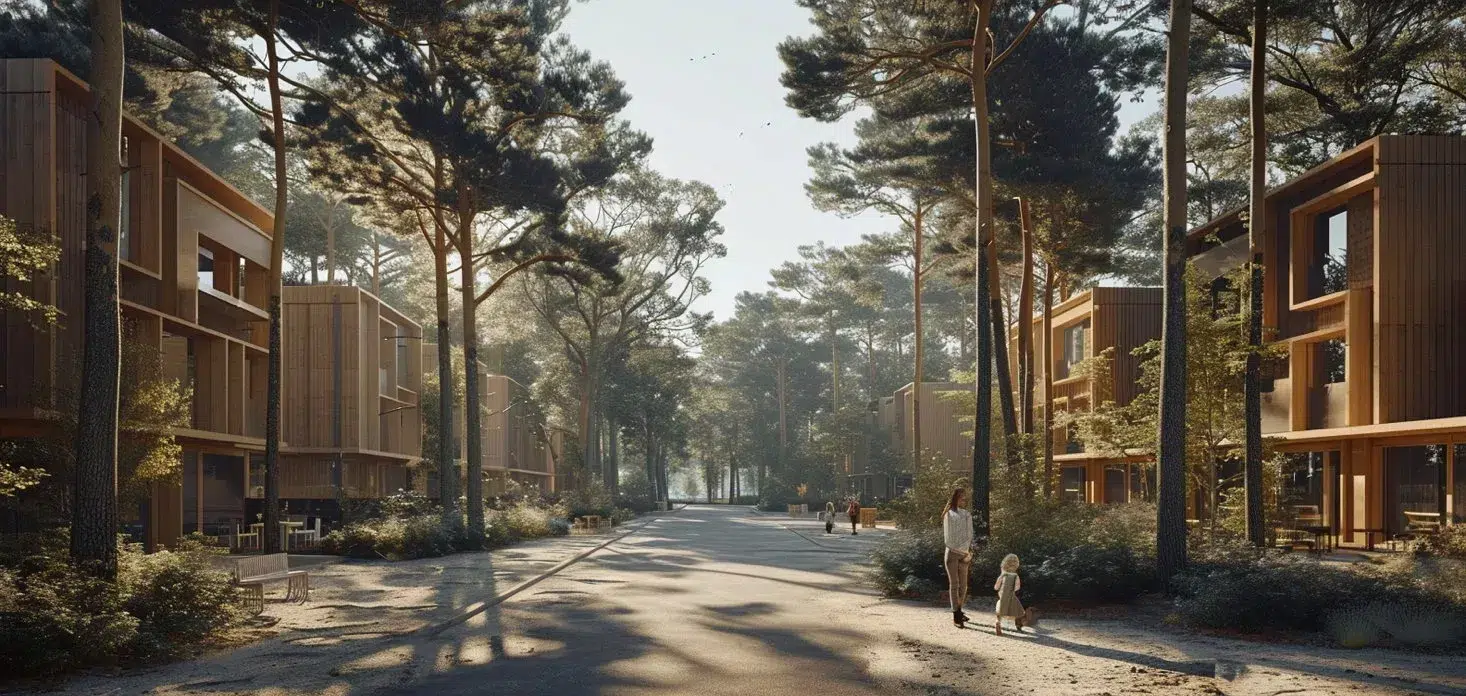
Mediterranean pine tree forests, known as “Pineta” in Italy and “Pineda” in Spain, are iconic landscapes that play a vital role in the ecology and culture of the Mediterranean region. These forests are predominantly composed of various species of pine trees, adapted to the Mediterranean climate characterized by hot, dry summers and mild, wet winters. In recent years, there has been an increased awareness of the role of Pineta in coastal protection and as a habitat for diverse wildlife.
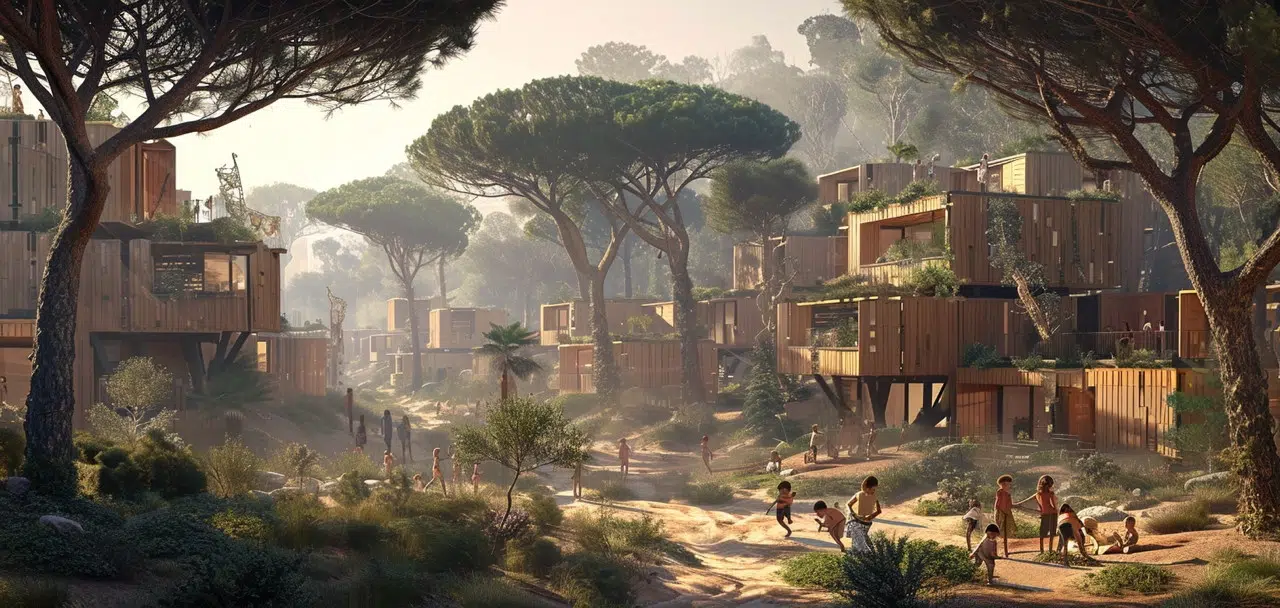
Pineda forests in Spain play a crucial role in soil conservation, preventing erosion, and maintaining regional biodiversity. They also act as important carbon sinks, helping in the fight against climate change.
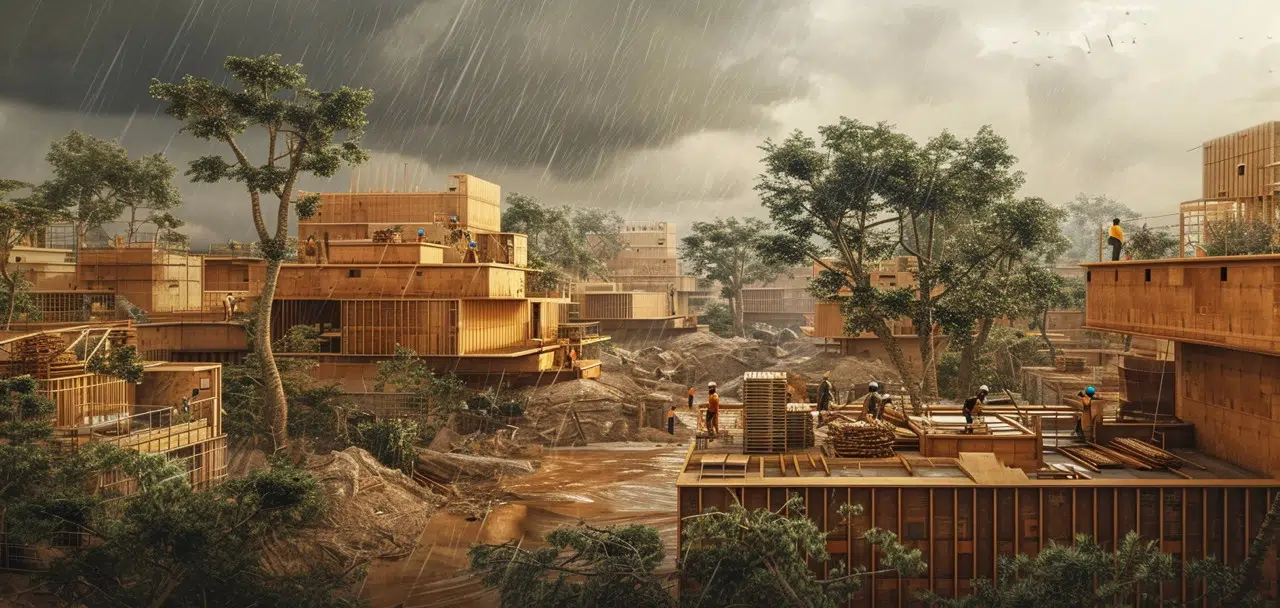
I also attempted to imagine construction projects and difficult weather conditions, as the disruption of weather patterns will bring many challenges driven by heavy rain and storms.
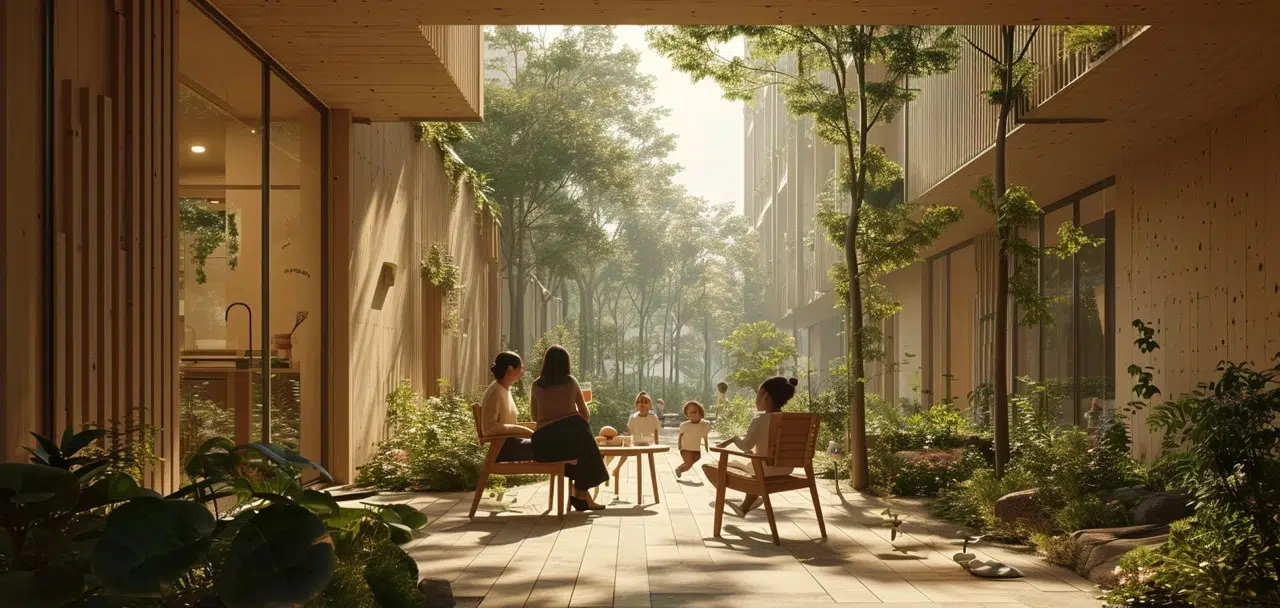
I love trees; trees are the foundations of a happy living habitat. Among trees, pine trees are my favourite, significantly warmer climate pine trees, like the stone pine, Aleppo pine, and Scots pine. The AI doesn’t necessarily respect each biological reference but tends to “get the vibe”.
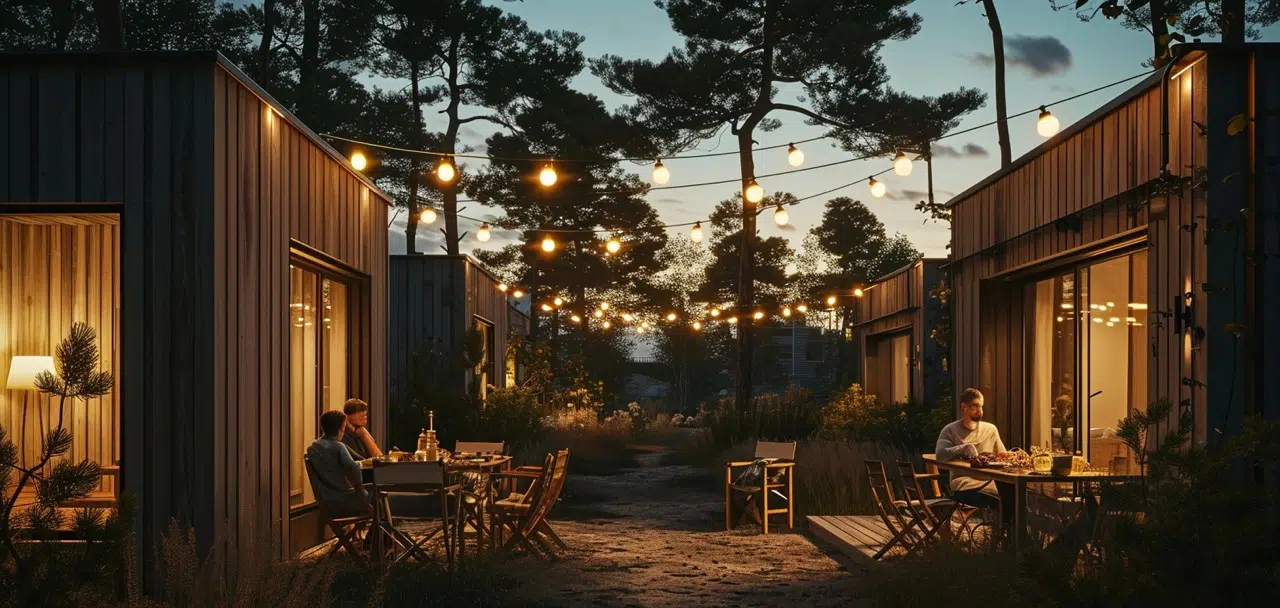
I need to find a way to add paths in stones or gravel. With rain, this would rapidly become a mud nightmare. Adding the lights was also tricky. Prompting them would add a robust Amélie Poulain retro/vintage feel I was trying to avoid.
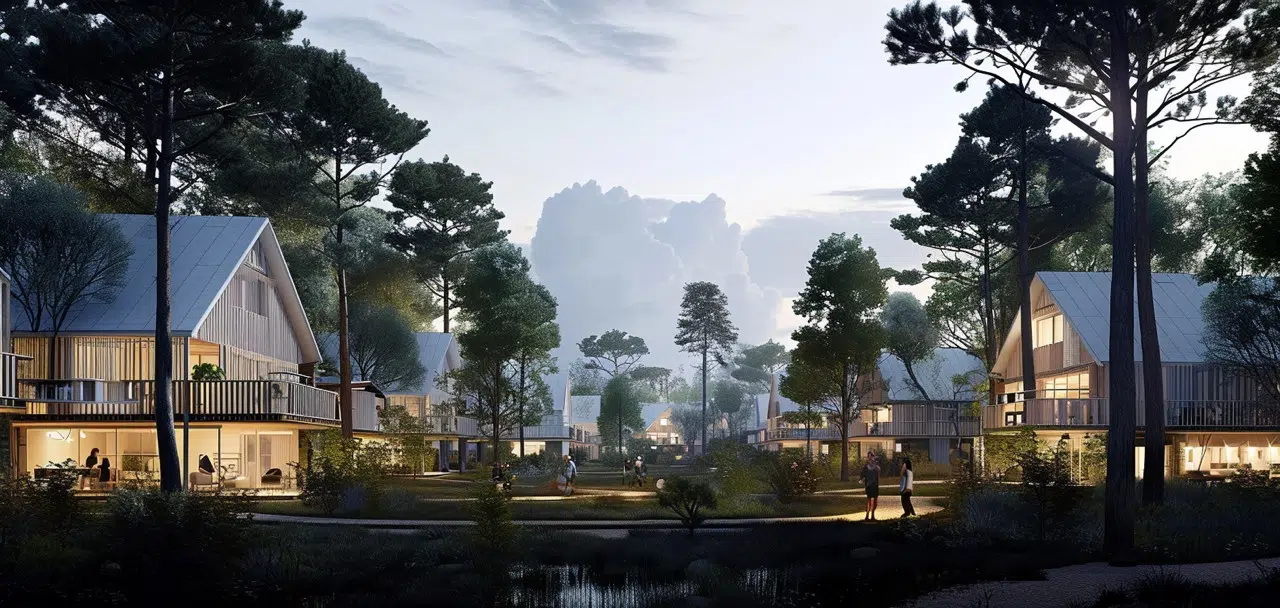
More eco-villages and trees
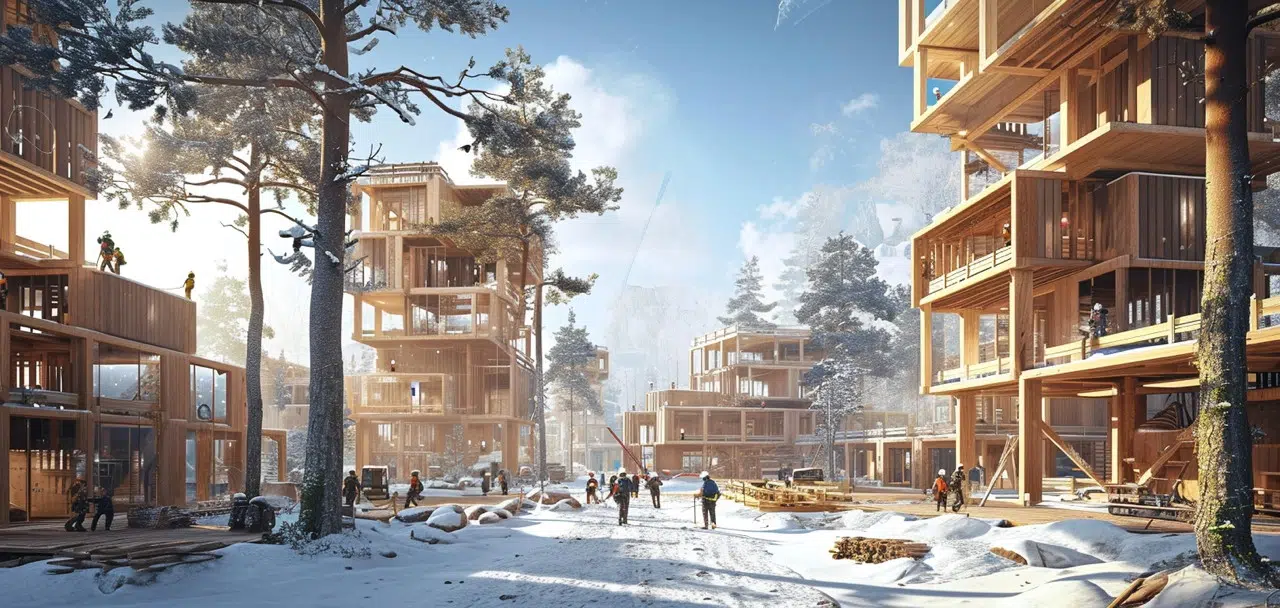
Just having fun with snow.
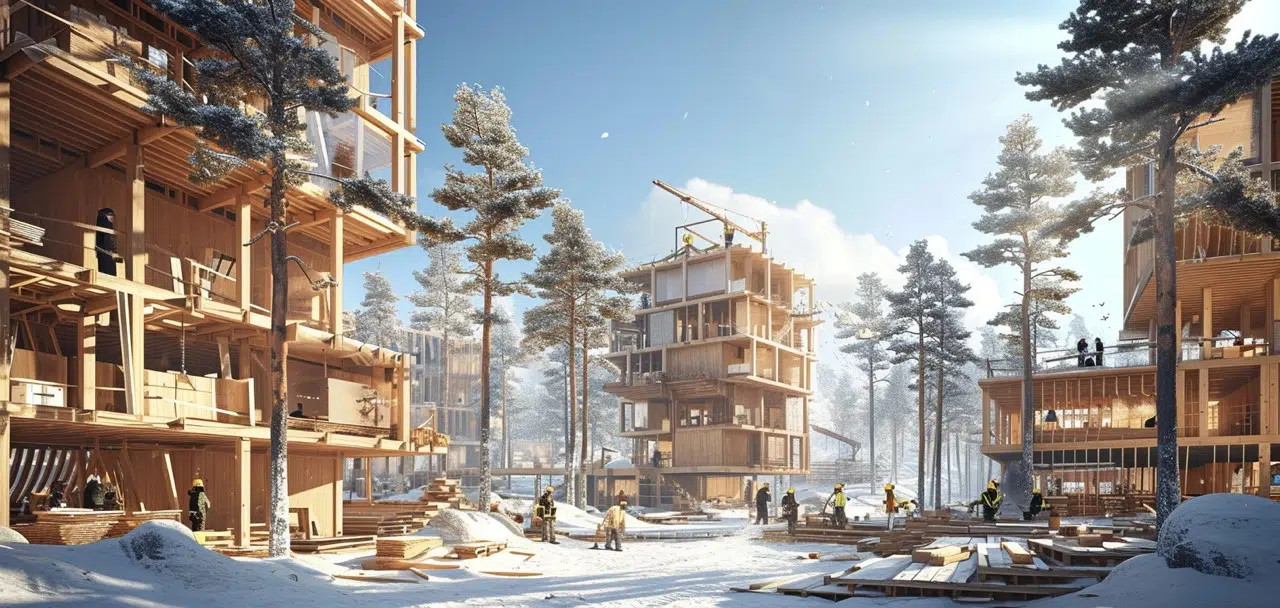
More snow and fun. Construction sites are fun to explore with Midjourney. I will try to do more of them.
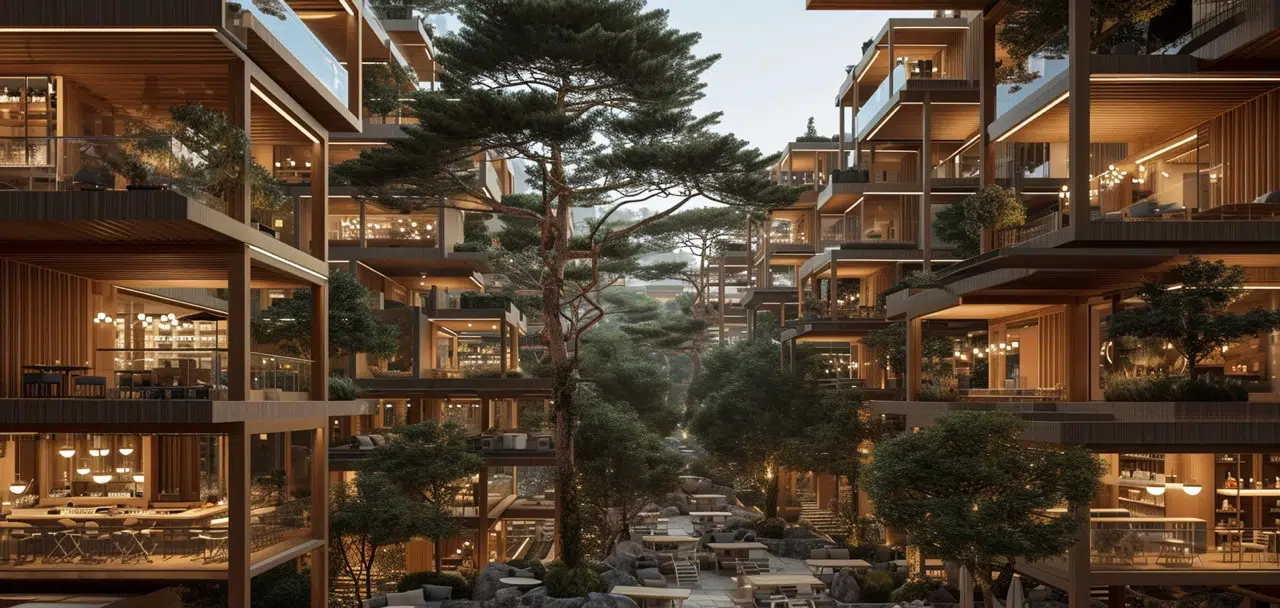
I hesitated to use this image as the post-central/key visual. But the boat had a more inspiring and mysterious exploration feel, which seemed more important for such an exercise. This would be a communal living and coworking space. Again, the tree is the key.
Project summary
- AI as a tool for positive visualization: A conversation with AI to create inspiring images, this project aims to offer a more preferable –I like that word– perspective on future habitats, especially for younger generations (like my kids) concerned about environmental issues.
- Challenging car-centric urban designs: A significant focus is imagining cities and neighbourhoods without cars, emphasizing landscapes, vegetation, sustainable architectures, and moving away from traditional urban designs.
- Embracing the Mediterranean landscape: Inspired by the warm climates of the Mediterranean, the project incorporates elements like Pineta (pine tree forests) in Italy and Pineda in Spain, recognizing their ecological and cultural importance.
- Sustainable living concepts: The envisioned future habitats include communal spaces, public transportation infrastructures, urban farming, and eco-villages, promoting a lifestyle harmonizing with nature.
- Speculative design elements: The project delves into speculative design, imagining integrating green spaces, biosource-based structures, and sustainable food systems within “urban” settings.
- Redefining lifestyle and work culture: It speculates on societal shifts such as a four-day workweek and a semi-nomadic, minimal living lifestyle, questioning current work and life paradigms.
- Architectural and ecological challenges: The project also explores the architectural and ecological challenges in creating these habitats, considering weather conditions and the need for resilient infrastructure.
- Visual style and challenges: The visual style avoids stereotypical futuristic tropes and focuses on a more realistic, relatable aesthetic. Challenges like incorporating vegetation, paths and managing lighting elements and moods are part of the creative process.
As usual, these images are unretouched and licensed under the Attribution-NonCommercial 4.0 International (CC BY-NC 4.0). This means you are free to share, adapt, and remix the content, as long as you provide appropriate credit to the original author and indicate any changes made.

W&G 2024